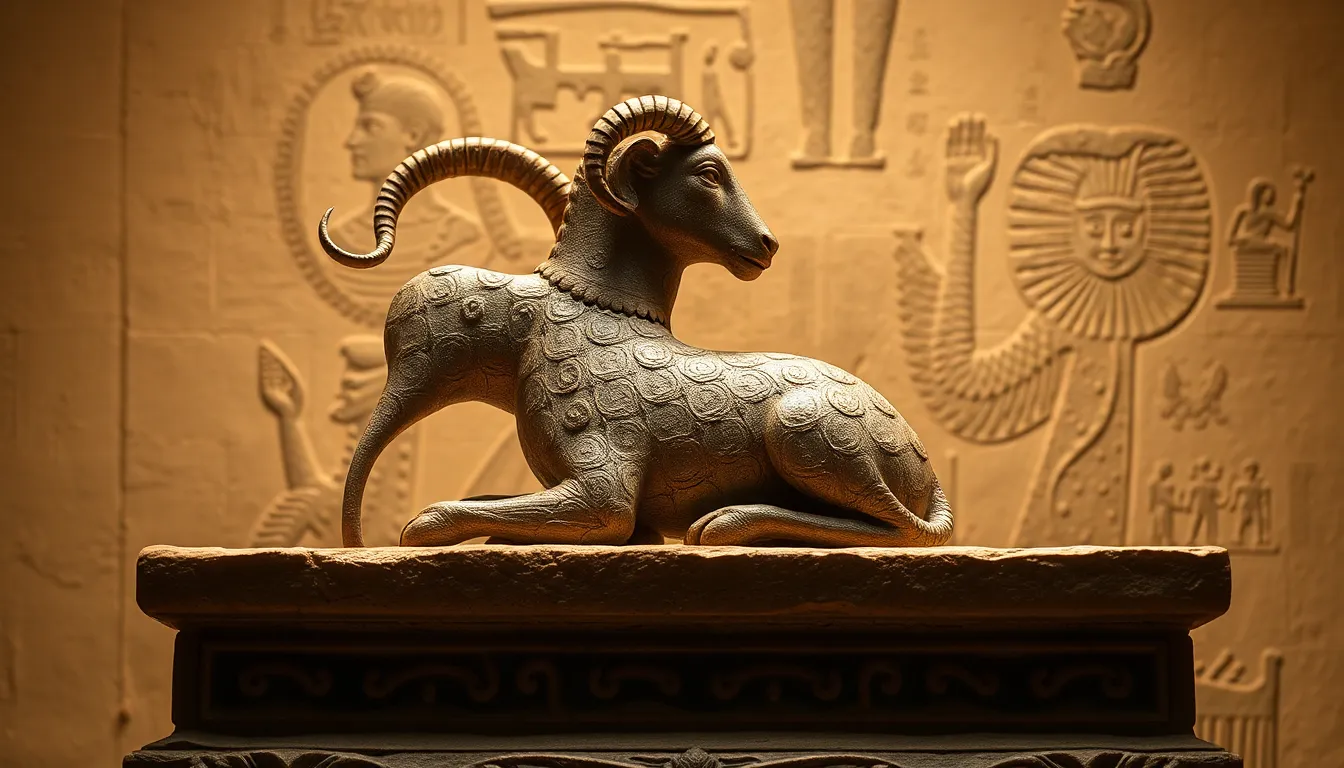The Symbolism of the Ram in Tomb Texts
I. Introduction
Throughout history, tomb texts have served as profound expressions of cultural beliefs and practices surrounding death and the afterlife. These inscriptions and illustrations, found in various ancient civilizations, provide insights into the values and spiritual understandings of the societies that created them. Among the myriad symbols depicted in these texts, the ram stands out as a significant figure, rich in meaning and importance.
This article aims to explore the multifaceted symbolism of the ram in tomb texts, particularly in the context of ancient Egyptian mythology. By examining the historical relevance, mythological associations, artistic representations, and contemporary interpretations of the ram, we will uncover the depth of its significance in ancient funerary practices.
II. Historical Context of Tomb Texts
Tomb texts, often inscribed on the walls of burial chambers or on funerary objects, served several purposes in ancient civilizations. They were intended to provide guidance for the deceased in the afterlife, invoke protection from gods, and offer insights into the individual’s life and beliefs.
Various cultures, including Ancient Egypt and Mesopotamia, utilized tomb texts to convey messages about the afterlife. In Egypt, these texts, such as the Pyramid Texts and Coffin Texts, were essential in ensuring safe passage and favorable conditions for the deceased in the underworld. Animals played a crucial role in these beliefs, often symbolizing different aspects of life, death, and the divine.
III. The Ram in Ancient Mythology
The ram occupies a prominent place in ancient mythology, representing various themes across different cultures. In Egyptian mythology, the ram is closely associated with the god Amun, who was often depicted as a ram or with ram-like features. Amun, considered a creator god and a deity of wind, held great significance in the religious practices of ancient Egyptians.
Some key associations of the ram in mythology include:
- Fertility: The ram is a symbol of fertility and rebirth, associated with the agricultural cycles vital to ancient societies.
- Power: The ram represents strength and authority, often linked to kingship and divine rule.
- Protection: In various narratives, the ram is seen as a protector, safeguarding the deceased on their journey to the afterlife.
IV. Iconography and Representation of Rams in Tomb Art
Rams are frequently depicted in tomb paintings and carvings, serving as powerful symbols within the artistic narratives of ancient Egypt. These visual representations vary in style and significance, often reflecting the cultural and religious beliefs of the time.
Some notable aspects of ram iconography include:
- Realism vs. Symbolism: Artists employed both realistic and symbolic styles to convey the ram’s importance, with some depictions focusing on the animal’s physical attributes while others emphasized its symbolic associations.
- Ritual Context: Rams are often shown in scenes depicting rituals, signifying their role in funerary practices and the connection to the divine.
- Colors and Textures: The use of colors and textures in representing rams can indicate their status and significance, with gold and vibrant hues often denoting divinity.
V. The Ram as a Symbol of the Afterlife
In ancient Egyptian beliefs, the ram was viewed as a guide and protector for souls navigating the afterlife. This association stemmed from the ram’s strength and its representation of divine power.
Key interpretations of the ram’s role in the afterlife include:
- Guiding Souls: The ram was believed to help guide souls through the challenges of the afterlife, ensuring safe passage to the afterworld.
- Protectors: Rams were thought to act as guardians against malevolent forces, providing safety to the deceased during their journey.
- Comparative Analysis: While other animals, such as the jackal (associated with Anubis), also held protective roles, the ram’s connection to fertility and power set it apart in funerary symbolism.
VI. Rituals and Offerings Involving Rams
Rituals involving rams were integral to ancient funerary practices. The significance of these animals was not only symbolic but also practical in the context of offerings and sacrifices.
Important aspects of ram-related rituals include:
- Funerary Sacrifices: Rams were often sacrificed as offerings to the gods, believed to appease deities and ensure the deceased’s safe passage.
- Offerings in Tombs: Depictions of rams in tombs often accompany texts outlining the offerings made to ensure the deceased’s comfort and favor in the afterlife.
- Cultural Variations: Different societies had unique interpretations and practices regarding rams, reflecting their specific beliefs and values.
VII. The Ram’s Symbolism in Contemporary Interpretations
Modern scholars continue to explore the symbolism of the ram in ancient texts, revealing new insights into its significance. Contemporary interpretations highlight the ram’s enduring legacy in culture and spirituality.
Some key points of interest include:
- Scholarly Insights: Researchers analyze the ram’s symbolism through various lenses, including anthropology and religious studies, to understand its role in ancient societies.
- Influence on Art: The ram’s imagery persists in contemporary art and literature, often symbolizing strength and resilience.
- Spiritual Significance: In modern spiritual practices, the ram is sometimes invoked as a symbol of protection and guidance, reflecting its ancient associations.
VIII. Conclusion
The exploration of the ram’s symbolism in tomb texts reveals a rich tapestry of meanings that resonate through time. From its associations with fertility, power, and protection to its critical role in funerary rituals, the ram embodies essential aspects of ancient Egyptian spirituality.
Understanding these ancient symbols enables modern audiences to appreciate the complexities of human culture and the ways in which symbols connect us to our past. The ram’s enduring significance in both historical and contemporary contexts underscores its place as a powerful emblem in human spirituality and culture.




